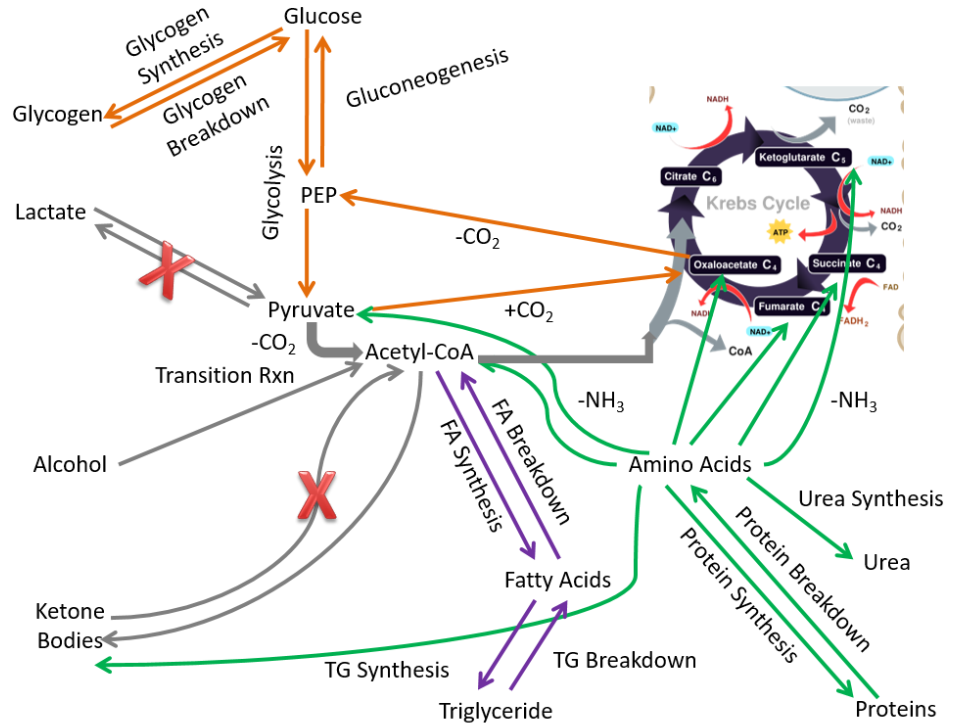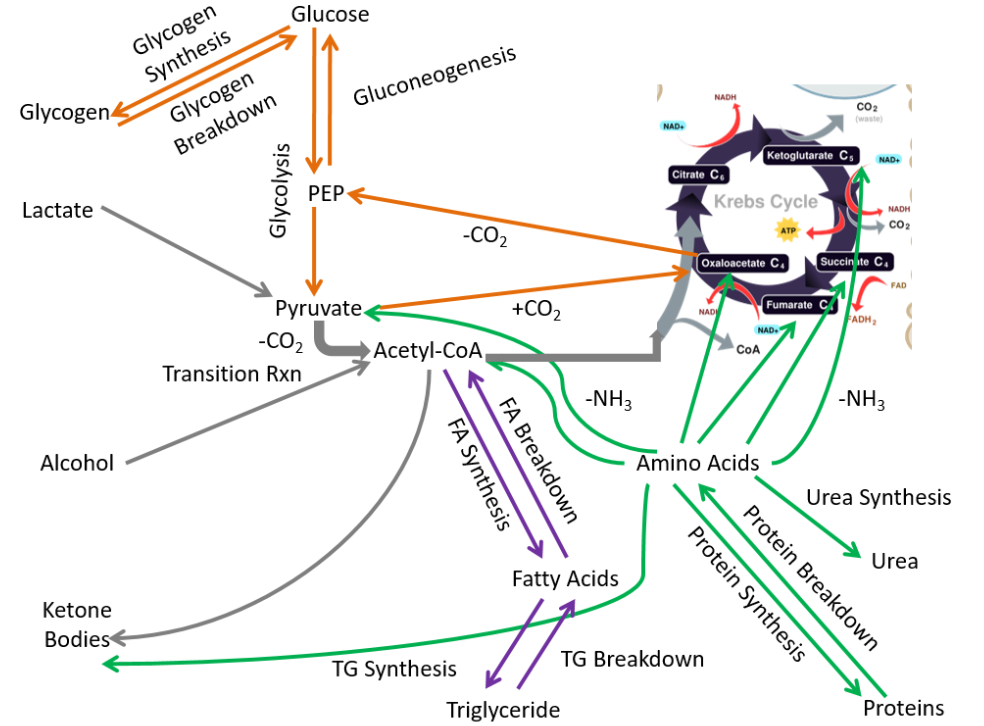7.2: Liver Macronutrient and Alcohol Metabolism
- Page ID
- 21004
The liver is the organ that has the greatest macronutrient metabolic capability; there are a number of metabolic functions that only the liver performs. However, there are two major macronutrient metabolic processes, lactate synthesis and ketone body breakdown, that the liver will not normally perform, as shown in the figure below.

But aside from those two pathways, the liver performs all the other metabolic pathways that you have learned about that are listed and shown below:
- Glycogen synthesis and breakdown
- Glycolysis
- Gluconeogenesis
- Alcohol oxidation
- Ketone body synthesis
- Fatty acid synthesis and breakdown
- Triglyceride synthesis and breakdown
- Protein synthesis and breakdown
- Urea synthesis
- VLDL synthesis
- Glucose-6-phosphatase

The liver is the only tissue that performs the following functions:
- Ketone body synthesis
- Urea synthesis
- VLDL synthesis
The liver is also the primary, but not exclusive site, of the following functions:
- Alcohol oxidation (also occurs in the stomach)
- Gluconeogenesis (also occurs in the kidney(s))
- Glucose-6-phosphatase activity (also occurs in the kidney(s))
- Lactate breakdown (also occurs in muscle)2
Glucose-6-phosphatase is important because it removes the phosphate from glucose-6-phosphate so that glucose can be released into circulation. Kidneys have glucose-6-phosphatase and can perform gluconeogenesis. However, it is estimated that 90% of glucose formed from gluconeogenesis is produced by the liver; the remaining 10% is produced by the kidney(s). It is also important to note that the muscle does not have this enzyme, so it cannot release glucose into circulation3.
References
- en.Wikipedia.org/wiki/File:CellRespiration.svg
- Phypers B, Pierce JMT. (2006) Lactate physiology in health and disease. Continuing Education in Anaesthesia Critical Care & Pain, 6(3).
- Stipanuk MH. (2006) Biochemical, physiological, & molecular aspects of human nutrition. St. Louis, MO: Saunders Elsevier.


